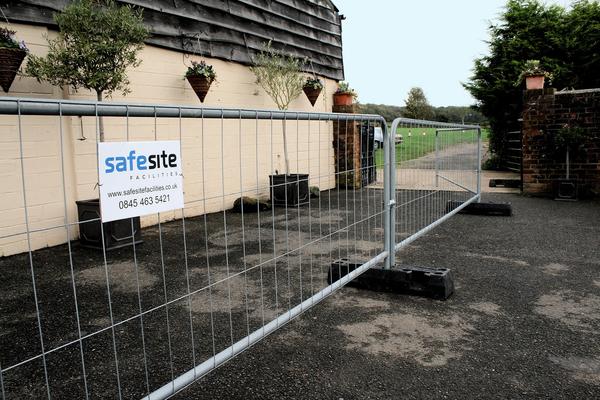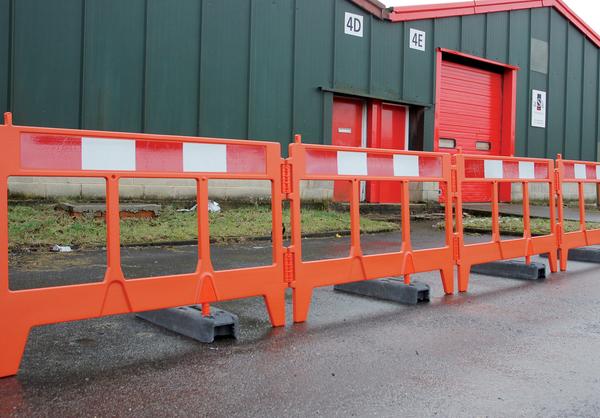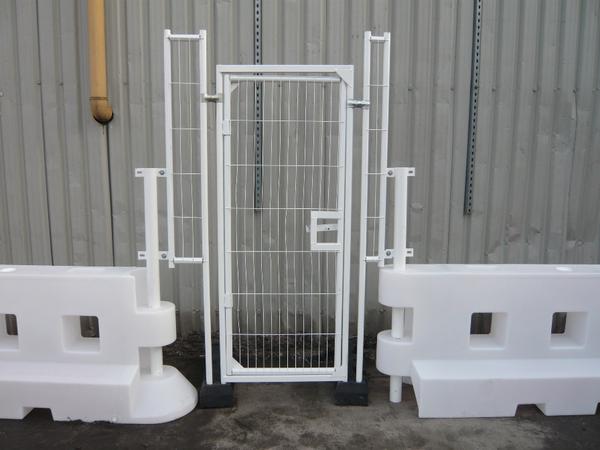Subscribe to our newsletter
Sign up for the latest news & offers from SafeSite
Quick and competitive quotes. Nationwide coverage
Quick quotes. Nationwide coverage
Pedestrian barriers exist to guide and protect pedestrians in any area where they may be at risk from hazards, or in situations where crowd numbers and footfall can have implications for safe movement and crowd control.
SafeSite Facilities offer pedestrian barriers of either plastic or steel construction, either of which offers considerable stability and security once installed on-site. Either type can be deployed effectively to mark out walkways, provide perimeter security and offer barrier protection.
Although both plastic and steel pedestrian barriers are incredibly stable, both types are available in relatively light-weight options, for easy redeployment as work progresses or as the use of an area changes. Each type can also be interlocked effectively and can be ‘locked’ into their joined positions, to create tamper-proof barrier runs for additional security which can cover significant site areas.
But as well as the commendable features which both designs share, each version offers specific additional features which may make them more suitable to certain sites or security situations:
Steel Pedestrian Barriers

Steel pedestrian barriers offer enhanced strength from Smartweld technology and a heavy tube construction which combine to facilitate heavy duty crowd control with strength, to provide barriers which cannot be easily breached.
Anti-climb versions are also available, to minimise breaching of sites by scaling the perimeter. For this reason, steel pedestrian barriers can also be used to offer additional security within sites and outdoor event arenas.
Plastic Pedestrian Barriers

Plastic pedestrian barriers have the advantage of being available in a range of highly visible colour options which can also incorporate reflective designs for additional safety after dark, as well as signage for safety, warning and information notices, or brand notices.
One of the advantages of deploying plastic barriers to guide pedestrian and foot flow is that they are substantial enough to be ‘a presence’ but with less potential to injure in any instance where a pedestrian might find themselves caught against the barrier. The fact that plastic barriers are highly resistant to damage also adds to the pedestrian protection they can offer.
In overall design, the blow moulded technology used for manufacture of these barriers means that plastic barriers offer a lightweight strength. They can also incorporate a choice of feet as required – standard or anti-trip feet which offer path clearance to maximise pedestrian convenience and safety. This option can make plastic pedestrian barriers particularly suitable in public areas used by the elderly, young or disabled.
The fact that plastic pedestrian barriers are additionally very convenient to stack and store and are easily and quickly deployed makes them well suited to emergency and ad-hoc pedestrian safety situations.
Site situations

As well as feature variations making each type of barrier suited to a particular purpose, the site specifics of where they will be deployed can also make one type of barrier more suitable than the other:
Enhancements for environments
Both steel and plastic barriers also have individual properties which make them suitable to particular environments where the weather is an influencing factor on the type of barrier chosen. For example, the highly robust galvanised finish of steel pedestrian barriers offers durability for prolonged deployment in extreme weather conditions and areas of high rainfall, where other barriers may be prone to movement, rust and deterioration.
Plastic barriers offer some enhanced wind resistance. Barriers such as Avalon barrier systems can withstand winds of up to 20 mph but other fully moulded designs, such as Strongwall Barriers, can be easily substantiated with water-filling for additional weight in wind-prone environments.
Where environmental hazards such as land slips need to be considered in the requirement for pedestrian safety, steel pedestrian barriers may offer superior resistance to impact and protect pedestrians from debris.
Finally, another environmental factor which both plastic and steel pedestrian barriers offer is that both can be 100% recycled and recyclable, so each option creates minimal environmental impact at the production stage and maximum impact on safety, when properly deployed. For additional advice and product information for both plastic and steel pedestrian barriers, the experts at SafeSite Facilities are happy to help.
We respond in under 30 mins on average (excl. weekends)